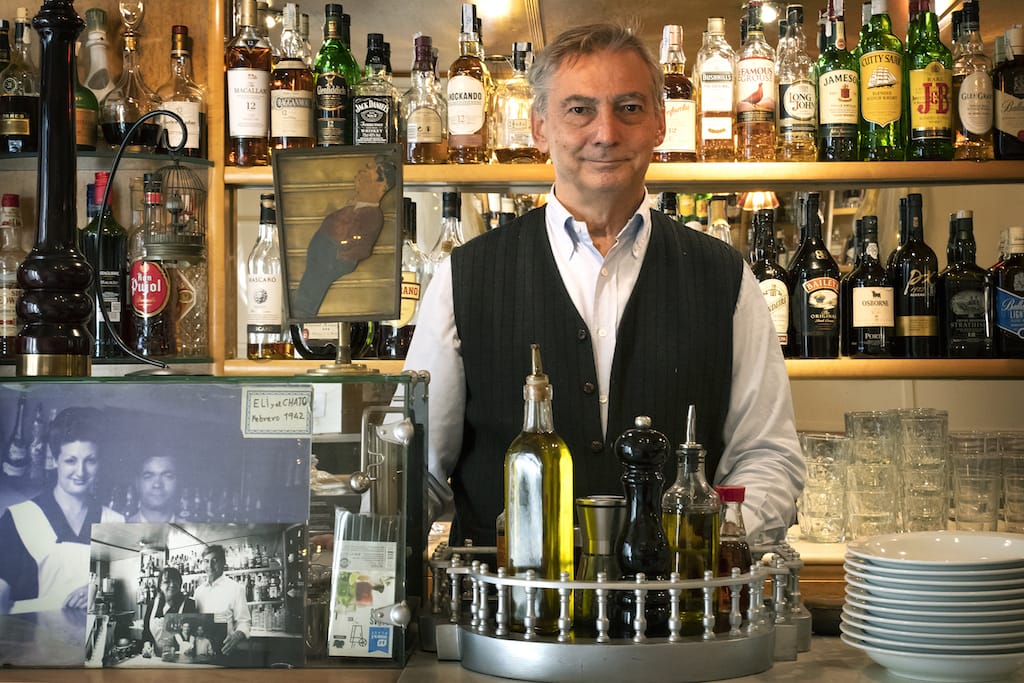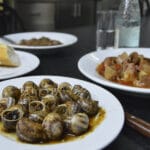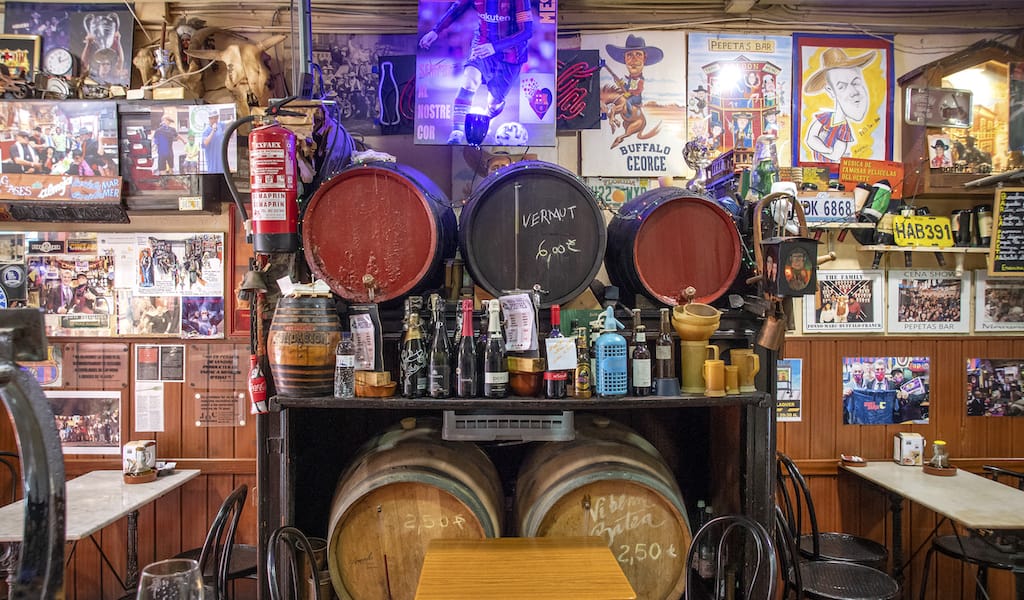When El Chato, considered to be Barcelona’s oldest Basque restaurant, opened in 1941 in El Fort Pienc, the neighborhood was a decidedly industrial one. In fact, the restaurant’s main clientele for decades were Basque truck drivers who were dropping off or picking up goods in the area.
Much has changed since the 40s. El Fort Pienc is now home to office workers as well as families, lured to the area by its proximity to the center of town. Meanwhile, Basque cuisine has gone on to become one of the world’s most celebrated, its home region filled with numerous Michelin-starred restaurants.
El Chato has evolved to reflect both of these changes, but in many ways it remains as it was when it first opened – a warm and welcoming place to taste traditional Basque market cuisine, still run by the same family.
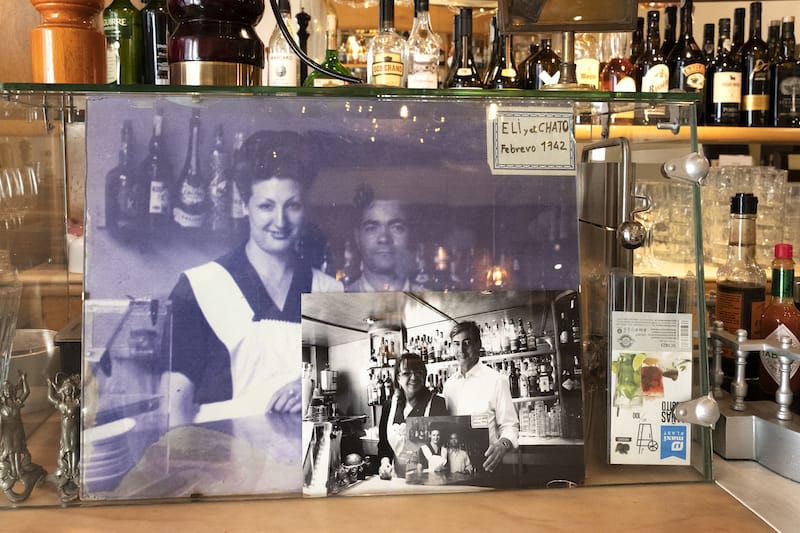
Stepping into El Chato, one can immediately feel a “homey” vibe. Which makes sense, when it first opened, the restaurant doubled as the home of its founders, the Basque Agustín Elorza and his wife Avelina García, originally from Spain’s La Rioja region. Their son, also called Agustín recalls growing up in El Chato, with his father at the bar and his mother in the kitchen. “My father was exiled from Basque Country after the end of the Spanish Civil War for being ‘a red’,” the 71-year-old says. “And a year and a half after he arrived in Barcelona, he opened this restaurant, one of the first ones in the area. The restaurant was also an inn, with a few rooms for Basque truck drivers.”
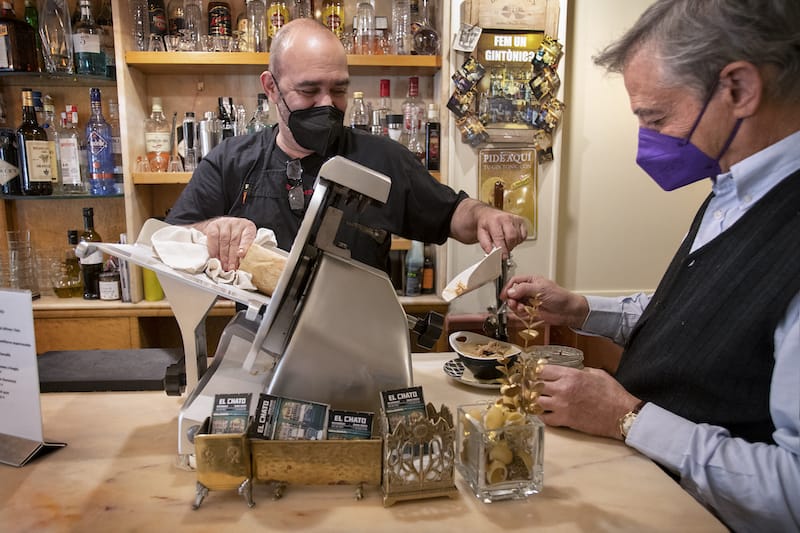
What are today intimate dining rooms in the back and upstairs of El Chato were at one time bedrooms, where the younger Agustín says he used to take naps during the work day. “The truck drivers would arrive at any moment of the day or night. This concept of only serving lunch between 13:00-16:00 didn’t exist at that time. They ate when they arrived. It was very hard,” he says. In Barcelona nowadays, it is common for restaurants to close between lunch and dinner service, with that break falling around 4pm-8pm.
In the day before this practice, Avelina used to cook a variety of traditional and humble Basque dishes for the drivers, like the iconic callos (tripe stew) or porrusalda, a leek soup with potatoes and other vegetables. These were perfect for working men looking for a quick and filling – not to mention affordable – meal.
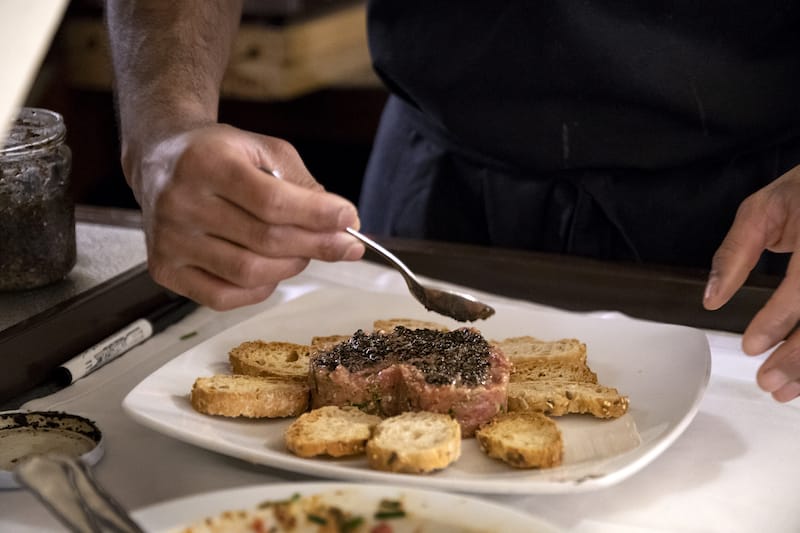
But despite the neighborhood’s evolution, El Chato still preserves many of its original Basque recipes. One of their most classic fish ones is the hake, made Basque style. It’s a hake stew, composed of a succulent sauce of garlic, onion, a bit a flour to thicken it and white wine, and is accompanied by peas and asparagus. From the hake, they also make kokotxas in green sauce, which is similar to the previous recipe, but instead of sliced hake and vegetables, it is made with delicious and creamy fish dewlaps (a fold of fatty fish neck). The dewlap is a very delicate and gelatinous part of the fish, and is normally cooked in a casserole, with an emulsion of olive oil, garlic, and guindilla chile or green sauce.
The cod is another iconic Basque recipe of cured cod chunks, garlic and spicy chile fried and served in creamy pil-pil sauce, made with the cod juices – rich in albumin – emulsified with olive oil.

Other traditional dishes are the baby squids in their ink, clams with beans, and the morcilla (Spanish blood sausage) with piquillo peppers (sweet preserved red peppers). Mushrooms are a passion shared by Catalans and Basques and another classic menu item that has remained on the menu is the butifarra amb bolets, made with stir fried Catalan pork and black pepper sausage and yellow chanterelles.
Like the Basque dishes, Agustín Jr. says he also has no plans to leave El Chato. “I am 71 years old and have no intention of retiring,” he says. “I’m happy here.” After all, he’s known no other home.
Published on March 01, 2022
Related stories
May 13, 2022
BarcelonaEight, six, or even just four hours in Barcelona’s airport are enough to take a cab or the Aerobus and jump into the city. The ride from the airport to the center takes around twenty-to thirty-minutes, and is really worth it to escape from the capsule of the airport – and that feeling of being,…
September 26, 2022
BarcelonaDuring our visit to Mescladís Borrel Restaurant & School, Victoria Gio, coordinator of the Mescladís program, is on the phone for a long time. She smiles and looks around trying to find someone – she has good news for one of the students. It is Ibrahima, a tall, shy student from Senegal who at the…
January 17, 2022
BarcelonaBarcelona’s old bodegas are resilient specimens. Despite facing the forces of development and gentrification, they have had an incredible capacity for preservation, remaining one of the few businesses in the city still alive with the same energy of decades past. The strong attachment of locals in Barcelona to the magnetic personality of their neighborhood bodega…







































